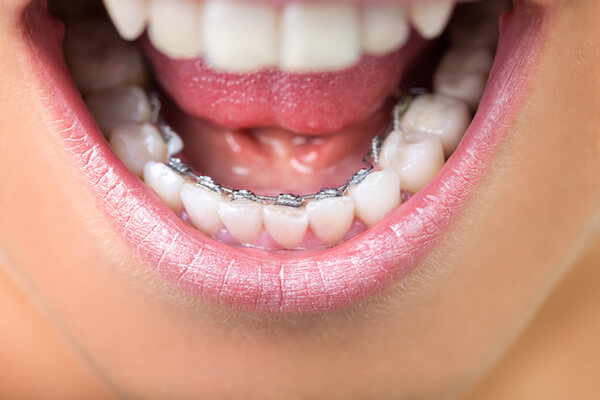How Do You Clean Lingual Braces?

While traditional braces are visible, lingual braces are not. Their ability of these braces to remain hidden behind the teeth has made them a popular alternative to the traditional braces worn on the front of the teeth. However, lingual braces are trickier to clean than traditional braces are and if proper cleaning techniques are not utilized throughout the straightening process, after removal, spotty teeth with cavities may be evident.
Tips for Cleaning Lingual Braces
Use the Proper Tools
It can take several weeks to adjust to wearing and cleaning lingual braces; however, once you have made this adjustment and determined which tools are the most comfortable for you to use, this cleaning process will become second nature.
There are a couple options available for flossing:
- Interdental Cleaners – Interdental cleaners are ideal for cleaning lingual braces. These cleaners fit between tight spaces and are able to remove plaque more efficiently than traditional floss. Interdental cleaners are available in a variety of sizes. Purchase a combo pack to determine which size or sizes fit between your braces the best.
- Super Floss – Super Floss is a tool designed to clean between braces, wide dental gaps and bridges. Super Floss consists of three unique components, a stiff threader, a spongy floss and conventional floss. The stiff threader makes it easier to gain access to the backside of the teeth (beneath the braces) as well as between the teeth, the spongy floss picks up more plaque and food particles than traditional floss will, and the conventional floss can be used between the teeth themselves.
Practice Proper Dental Hygiene Daily
To ensure that tooth decay and gingivitis are not an issue, you must practice proper dental hygiene every day.
Daily dental hygiene includes:
- Brushing the teeth and the gum line with a soft, round-bristle toothbrush. Brush two times a day for at least two minutes per session (30 seconds in each of the four quadrants of the mouth). Most patients choose to brush their teeth upon rising and directly before they head to bed. Oral-B™ Electric Toothbrushes are a great investment because they have a built-in mechanism that causes the toothbrush to pulsate every 30 seconds, which directs the user to move to another quadrant of the mouth.
- Flossing to remove food debris and plaque between the teeth and behind the braces.
- Using some type of oral irrigation device to flush out food particles around the teeth and the lingual braces.
- Strengthening teeth by using a fluoride rinse.
Remove Debris Directly Following Meals
While the majority of people brush and floss twice a day, adding cleanings following food consumption is recommended. By cleaning out debris with a dental pick, Waterpik™ or floss directly after a meal, there is less time for the food to negatively affect the teeth and the gums. Furthermore, removal of food particles is much easier following a meal than it is hours later.
About the Waterpik™
For people with and without braces, the use of a Waterpik™ can be beneficial. However, using a Waterpik™ is not as effective as using dental floss or interdental cleaners. The Waterpik™ is unable to reach some of the tighter areas between the teeth. However, a water pick can be used as a mechanism to flush out large food particles that are sitting around the teeth and the braces after a meal.
Food Choices
Chewing gum and sticky foods (e.g., caramel and taffy) tend to get stuck in and around braces. Additionally, crunchy and hard foods have the potential to loosen bands, bend wires or cause the adhesive that holds the brackets in place to become loose. If the brackets are loosened, the length of time the braces need to be worn increases. Thus, affecting your removal date: For this reason, avoiding these kinds of foods is recommended.
Professional Dental Cleanings are Vital
Diligently cleaning your teeth while you wear your lingual braces substantially decreases the likelihood of white spots or cavities being present upon their removal. Even so, professional dental cleanings must be performed every six months. During these cleanings any missed plaque and debris is removed before it can build up.
Schedule Regular Checkups at Valderrama Orthodontics
During your regular checkups, Dr. Natalia Valderrama will make sure that your lingual braces are not bent, loose or becoming loose: Since the length of time braces are worn can be affected by these issues, regular checkups ensure that your braces will be removed sooner, rather than later.
If you are looking for a caring, compassionate and experienced orthodontist, please contact Valderrama Orthodontics today at 321-544-4127 to schedule your complimentary initial consultation. Dr. V and her staff understand that life is busy, which is why an After-School Program has been created: This program is designed to assist families with making sure their children are able to receive the orthodontic care they need.



Let's Get Social